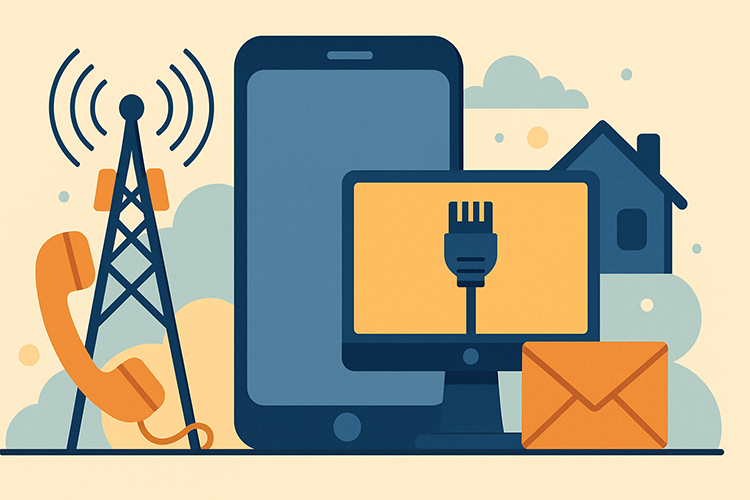2025-09-29
indicators

Poland’s telecommunications sector recorded continued growth in 2024, according to data from the Statistical Office in Szczecin, based on figures from the Office of Electronic Communications (UKE). Total revenues from telecommunications activities rose to PLN 44.4 billion, up from PLN 43.1 billion in 2023, despite declines in some traditional services. The structure of revenues highlights the ongoing transformation of the market. Mobile telephony remained the dominant source, generating PLN 16.5 billion, compared with PLN 15.3 billion in 2023. Internet access also strengthened, reaching PLN 10.8 billion, supported in particular by mobile technologies. Bundled services, which combine mobile, internet, television and sometimes VoIP, accounted for PLN 14 billion, reflecting the growing preference of consumers for package offers. By contrast, traditional fixed-line telephony continued to contract, with revenues falling from PLN 924.5 million in 2023 to PLN 827.3 million in 2024. VoIP telephony also saw a sharp drop in users, from 2.8 million to 2 million, with call volumes declining from 2.7 to 1.8 billion minutes. Mobile subscriptions continued to form the backbone of Poland’s telecoms market. By 2024, there were more than 53 million active mobile lines, up from 52.4 million a year earlier. Post-paid contracts dominated with 39.7 million users, while prepaid services stagnated. Outgoing mobile calls reached 105 billion minutes, similar to the previous year. Data transmission volumes grew significantly, with combined mobile and fixed traffic reaching 11,243 petabytes, compared with 9,486 petabytes in 2023. SMS messaging stabilized at around 38.6 billion messages, while MMS use rose slightly to 2.4 billion. Internet access is now close to universal. Mobile technology dominates with 80.5 million users, of which 59 million are consumers and 21.5 million are businesses. Fixed-line wired connections reached 9.1 million users, while wireless fixed access served 565,000. Fibre optic networks strengthened their position, representing 56 percent of fixed-line connections, while older xDSL connections fell to 27 percent. Pay-TV remained an important part of the market. In 2024, cable television counted 4.6 million subscribers, up from 4 million in the previous year. Satellite television remained strong, although its share continued to be eroded by IPTV and digital cable services. Bundled services also expanded, reaching 14.1 million subscribers compared with 13.7 million in 2023. The most common package included mobile telephony and mobile internet, followed closely by television combined with fixed-line internet. The data suggest three important developments for readers. Traditional fixed-line services are in steady decline, both in revenues and subscribers, confirming their diminishing role in the digital age. At the same time, data consumption is growing at an unprecedented pace, reshaping investment priorities in fibre optics and 5G. Finally, bundled services are becoming the norm, as consumers increasingly opt for integrated solutions rather than individual services. The outlook for the sector points to further consolidation around mobile, broadband and bundled packages. Fixed-line telephony is close to obsolescence, VoIP is losing relevance, and competition is shifting toward network capacity, speed and value-added services. For households and businesses, this means a deeper dependence on digital infrastructure, while policymakers face the challenge of ensuring broad and resilient access to support continued growth. Source: GUS

